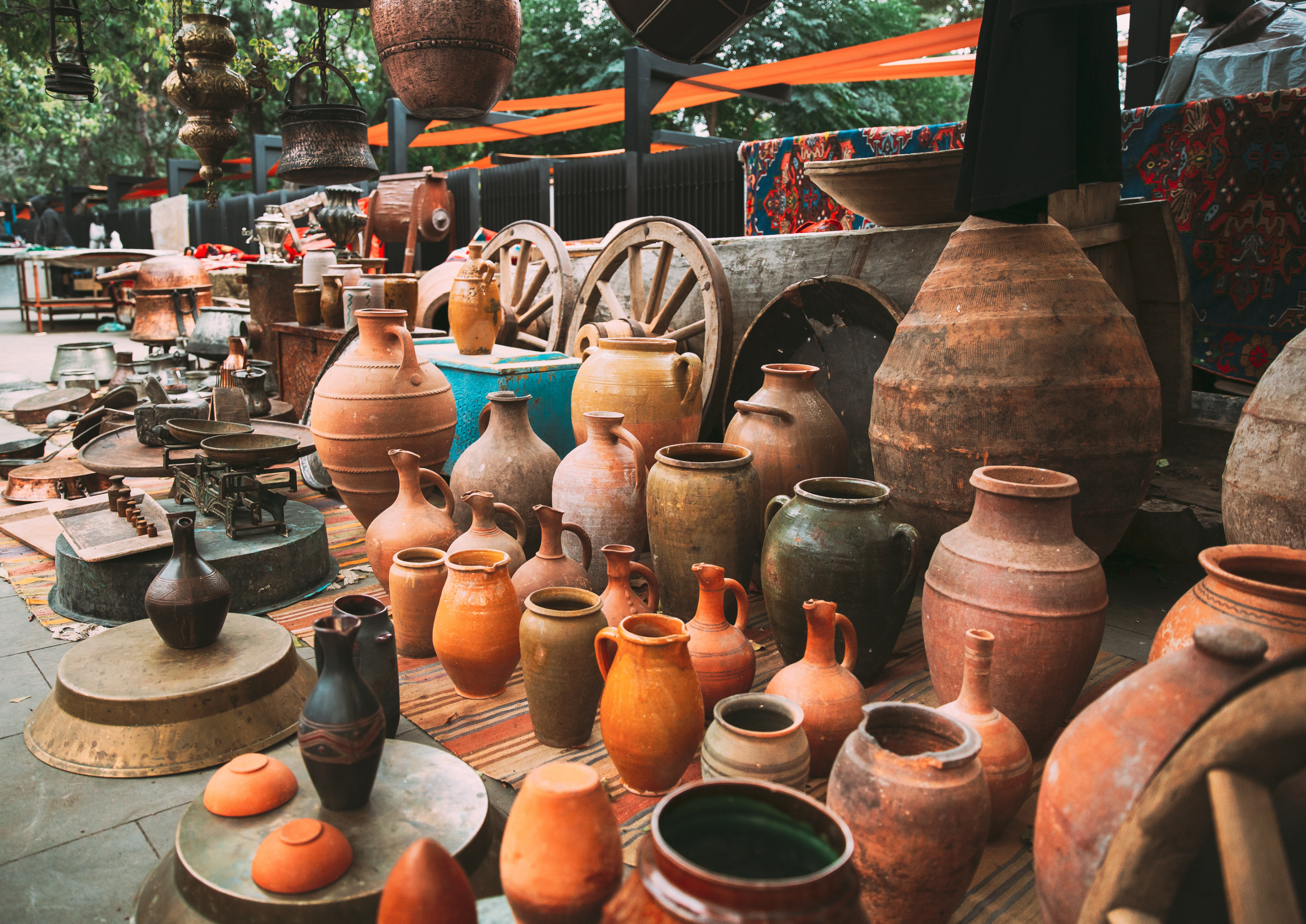
Rich Cultural Heritage
Georgia, a country at the crossroads of Europe and Asia, is a treasure trove of cultural heritage that spans thousands of years. Its diverse influences, from ancient civilizations to Byzantine, Persian, and Russian empires, combined with a unique indigenous identity, have shaped a rich cultural tapestry. Whether you are exploring its ancient cities, admiring its religious art, or partaking in its time-honored traditions, Georgia offers travelers a deep, immersive experience in cultural exploration. This detailed guide will explore why Georgia is a must-visit destination for its cultural heritage.
Ancient History

a. Prehistoric Civilizations and Archaeological Discoveries
- Dmanisi: The Dmanisi archaeological site is one of the most significant in the world, home to the earliest human remains outside of Africa. The skulls discovered here, dating back 1.8 million years, provide vital insights into the first human migrations. Visiting Dmanisi offers a rare glimpse into the dawn of human civilization.
- Trialeti Culture: In southern Georgia, the Trialeti culture thrived around 2200–1500 BCE, producing remarkable burial mounds, gold artifacts, and ceramics. Artifacts from this era can be viewed in the Georgian National Museum, showcasing ancient craftsmanship and early cultural sophistication.
b. The Kingdoms of Colchis and Iberia
- Colchis: Known from Greek mythology as the land of the Golden Fleece, Colchis is one of Georgia’s earliest known kingdoms. Situated along the Black Sea coast, it was a center of trade and culture during the Hellenistic period. The Vani Archaeological Museum houses artifacts from Colchis, revealing its importance in the ancient world.
- Iberia: The eastern kingdom of Iberia (modern-day Kartli) was another significant power in antiquity, particularly during the Roman and Byzantine periods. The remnants of Iberian culture are visible in Uplistsikhe, an ancient rock-hewn town and important religious and trade center from the early Iron Age.
c. The Adoption of Christianity
One of the pivotal moments in Georgian history was the adoption of Christianity in the early 4th century. Georgia became one of the first nations to officially adopt Christianity, and this decision had a profound influence on its culture, language, and art.
- Saint Nino: The woman credited with bringing Christianity to Georgia, Saint Nino, holds a revered place in Georgian cultural memory. Her symbol, a grapevine cross, remains an important emblem of Georgian Christianity. Sites dedicated to her, such as Bodbe Monastery in Kakheti, continue to attract pilgrims and visitors alike.
Architectural Marvels
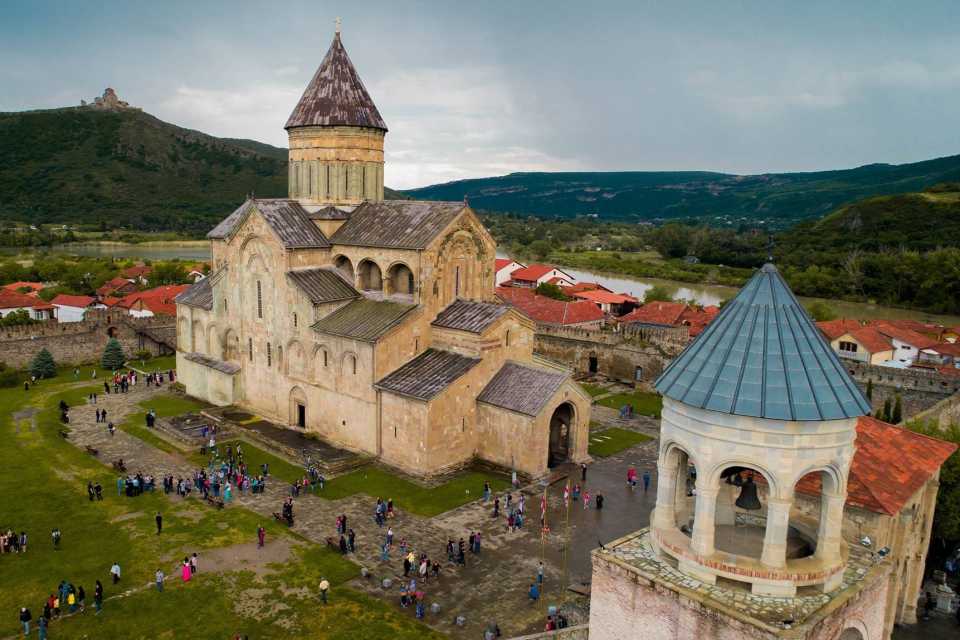
Georgia’s architectural landscape is a striking testament to its historical development, with buildings reflecting different periods and cultural influences. Visitors can explore Christian monasteries, medieval fortresses, and vernacular architecture that has shaped the country’s identity.
a. Christian Churches and Monasteries
Georgia is home to some of the oldest and most beautifully preserved Christian monuments in the world. Many of these sites are UNESCO World Heritage-listed, and their significance to Georgian national identity cannot be overstated.
- Svetitskhoveli Cathedral (Mtskheta): Built in the 11th century, this cathedral is one of the most sacred sites in Georgia. Legend has it that Christ’s robe is buried here, making it a central place of pilgrimage. The cathedral is renowned for its stunning frescoes and medieval architecture.
- Jvari Monastery (Mtskheta): Overlooking the town of Mtskheta, Jvari Monastery is an extraordinary 6th-century church and one of the earliest examples of a four-apsed church in the Caucasus region. Its simple yet harmonious design set the architectural style for Georgian churches that followed.
- Gelati Monastery (Kutaisi): Established in the early 12th century by King David IV, Gelati was a religious, educational, and cultural center. The monastery complex includes frescoes, mosaics, and an academy that once attracted scholars from all over the Christian world.
b. Medieval Fortresses and Castles
Georgia’s turbulent history of invasions and battles led to the construction of numerous fortresses, many of which are still standing today. These architectural marvels offer stunning views of the Georgian landscape and are a reminder of the country’s strategic importance.
- Narikala Fortress (Tbilisi): Situated on a hill overlooking the capital, Narikala is a 4th-century fortress that has been modified over the centuries. It provides breathtaking views of the city and the Kura River, with a history spanning multiple empires, from the Persians to the Ottomans.
- Ananuri Fortress (Kazbegi Region): Located by the Aragvi River, Ananuri is a stunning 17th-century fortress complex that combines both defensive and religious structures. It played a key role in defending the area and today offers visitors the chance to explore its towers and churches.
c. Vernacular Architecture and Mountain Villages
One of the most distinctive features of Georgian architecture is its vernacular style, particularly in the remote mountain regions like Svaneti and Tusheti.
- Svan Towers (Svaneti): These tall stone towers, dating from the 9th to 12th centuries, were built as both homes and defense structures, allowing families to protect themselves during invasions. The village of Mestia is home to numerous such towers, providing a glimpse into the region’s medieval life.
- Tushetian Koshki: Similar to the Svan towers, these fortified structures in the Tusheti region are made of stone and are scattered throughout the remote highlands, offering an insight into ancient highland life.
UNESCO World Heritage Sites
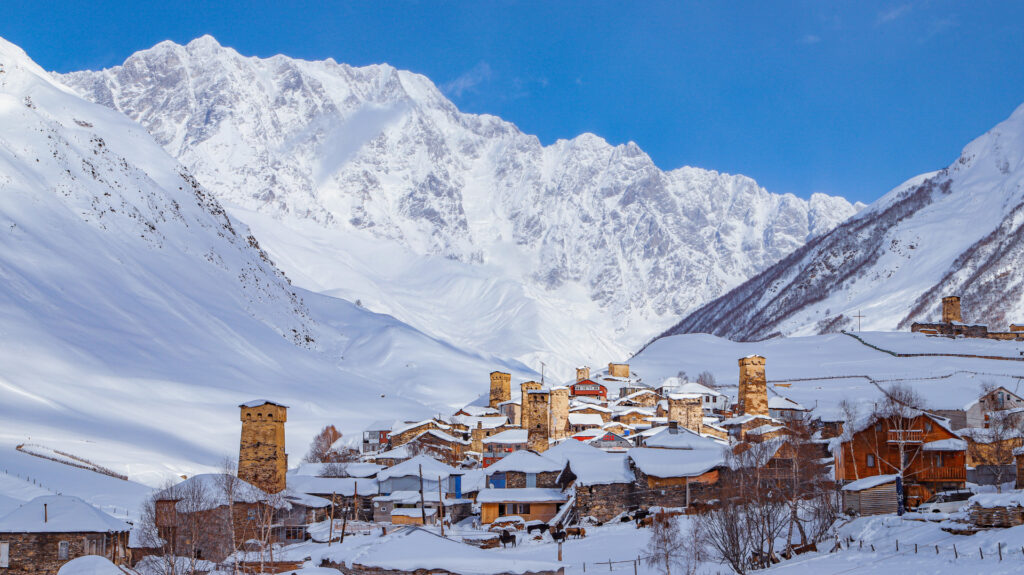
Georgia is home to three UNESCO World Heritage Sites, each representing different aspects of the country’s cultural legacy and importance in world history.
a. Historical Monuments of Mtskheta
Mtskheta, the former capital of Georgia and one of its oldest cities, is the spiritual heart of the country. Its historic monuments, including Svetitskhoveli Cathedral and Jvari Monastery, showcase early Christian architecture and the religious importance of the city.
b. Upper Svaneti
A mountainous region in the Greater Caucasus, Svaneti is a UNESCO-listed site known for its well-preserved medieval villages and unique defensive towers. The region’s isolation helped maintain ancient traditions, making it a living museum of Georgian culture and architecture. Svaneti’s cultural landscape, including Mestia and Ushguli, is set against the backdrop of breathtaking mountain scenery.
c. Bagrati Cathedral and Gelati Monastery
The Bagrati Cathedral and Gelati Monastery together form one of Georgia’s most important historical and religious complexes. Built in the 11th and 12th centuries respectively, they symbolize Georgia’s medieval “Golden Age” under King David the Builder. The Gelati Monastery in particular was a major intellectual and cultural center, housing some of the finest Byzantine mosaics and frescoes in the region.
d. Colchic Subtropical Forests and Wetlands
Added to the UNESCO list in 2021, the Colchic Subtropical Forests and Wetlands along Georgia’s Black Sea coast are among the oldest temperate rainforests in Europe. This region, historically known as Colchis, is home to rare and endemic plant species, as well as endangered wildlife like the Caucasian leopard and migratory birds. The area’s biodiversity, protected within Kolkheti National Park and surrounding reserves, makes it a haven for nature lovers, showcasing Georgia’s rich ecological heritage alongside its cultural landmarks.
Cultural Traditions and Festivals
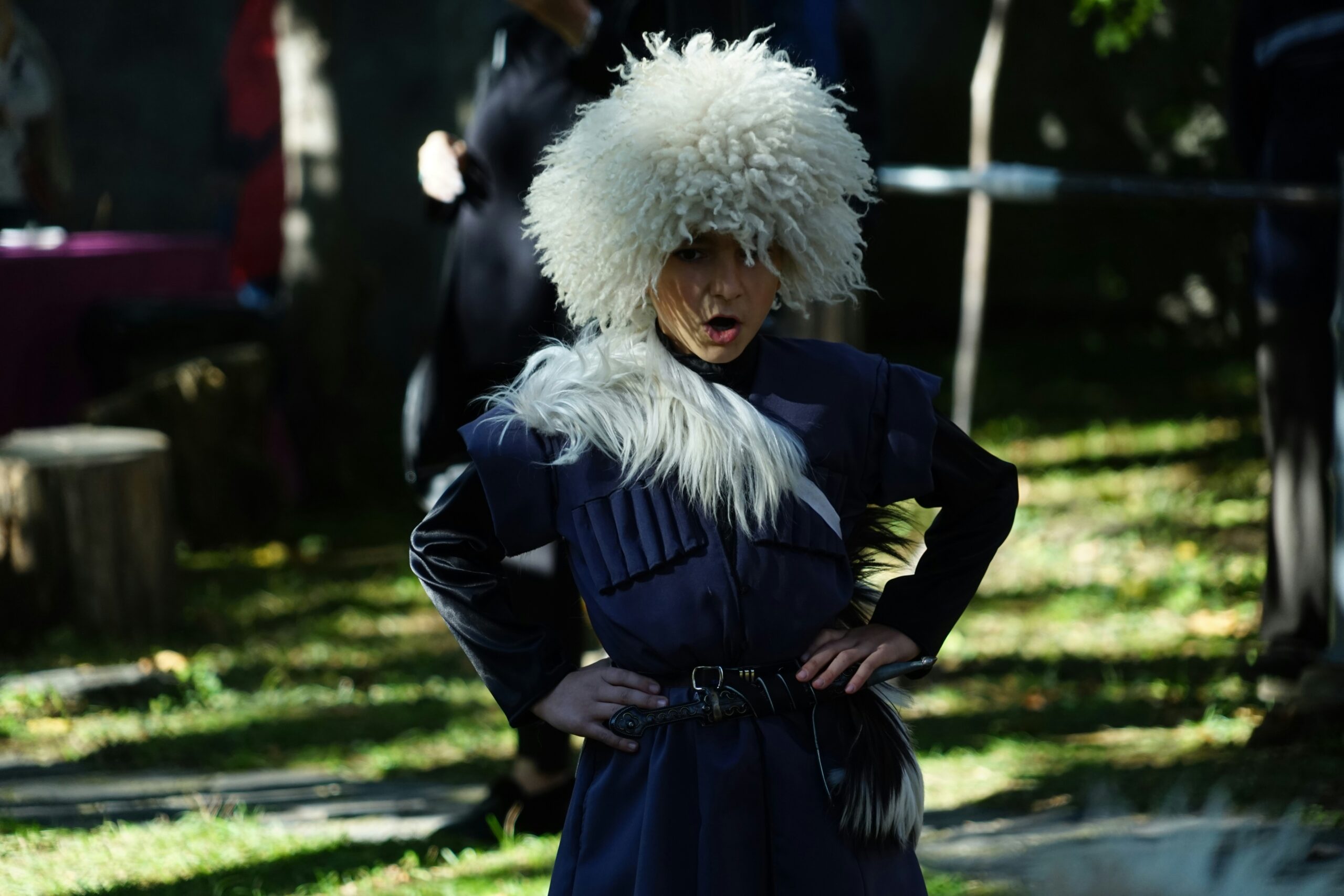
Georgia’s cultural richness extends beyond its historical monuments and architecture to include living traditions that are celebrated through music, dance, festivals, and rituals. Georgian culture is a dynamic and living tradition, deeply woven into the social fabric.
a. Polyphonic Singing
One of the most unique aspects of Georgian culture is its polyphonic singing, which is recognized by UNESCO as an Intangible Cultural Heritage of Humanity. Georgian polyphony, with its distinct harmonies and dissonances, reflects the diversity of the country’s regions. Traditional folk songs vary by region, and they are performed in both religious and secular settings. The Guria region, for instance, is known for its particularly complex polyphonic compositions, with up to three voices interweaving in intricate harmonies.
b. Traditional Georgian Dance
Georgian dance is an essential component of its cultural identity. The high-energy movements, graceful stances, and vibrant costumes reflect the history, regional diversity, and spirit of the Georgian people. Different regions have their own styles of dance:
- Kartuli: A romantic and elegant dance that represents love and respect between men and women.
- Khevsuruli: A vigorous and combative dance that originated in the highland Khevsureti region, showcasing sword-fighting skills.
- Acharuli: From the coastal Adjara region, this dance is light and playful, often characterized by spinning and fast footwork.
c. Traditional Festivals
Georgia’s vibrant culture comes alive in its many festivals, which are steeped in tradition and celebrate various aspects of life, religion, and the seasons.
- Tbilisoba: Held annually in October, this festival celebrates the capital city of Tbilisi. Tbilisoba showcases Georgian traditions, with street markets, performances, and exhibitions that honor the city’s diverse heritage. Visitors can enjoy concerts, parades, traditional dances, and a range of local food and drink.
- Alilo: A religious procession held during Christmas, Alilo involves participants dressed in traditional costumes, singing hymns, and distributing gifts. The event reflects Georgia’s deep Christian roots and communal spirit.
Culinary Heritage

Georgia’s culinary heritage is an integral part of its cultural identity. With influences from Europe, the Middle East, and the Caucasus, Georgian cuisine is diverse, flavorful, and deeply tied to social customs like the supra, or traditional Georgian feast.
a. Signature Dishes
- Khachapuri: A staple of Georgian cuisine, Khachapuri is a cheese-filled bread with regional variations. The most famous is Adjaruli Khachapuri, a boat-shaped bread filled with melted cheese, butter, and a raw egg on top.
- Khinkali: These traditional Georgian dumplings are filled with spiced meat or vegetables and are an iconic dish. The technique for eating Khinkali, which involves sucking out the flavorful broth inside before biting into the filling, is an important part of the experience.
- Pkhali: A vegetarian dish made from minced vegetables (such as spinach, beets, or eggplant) mixed with walnuts, garlic, and herbs. It’s typically served cold and highlights the Georgian love for fresh, local ingredients.
b. The Supra: A Feast of Tradition
The supra, or traditional feast, is one of the most important and cherished elements of Georgian culture. Presided over by a tamada (toastmaster), the supra involves multiple rounds of toasts, each more eloquent and philosophical than the last. The supra is not just a meal but a social and spiritual event, reinforcing community bonds and shared cultural identity.
Georgian wine plays a central role in the supra, as Georgia is recognized as one of the oldest wine-producing countries in the world. The ancient qvevri winemaking method, where wine is fermented in large clay vessels buried underground, is recognized by UNESCO as an Intangible Cultural Heritage.
Art, Literature, and Handicrafts
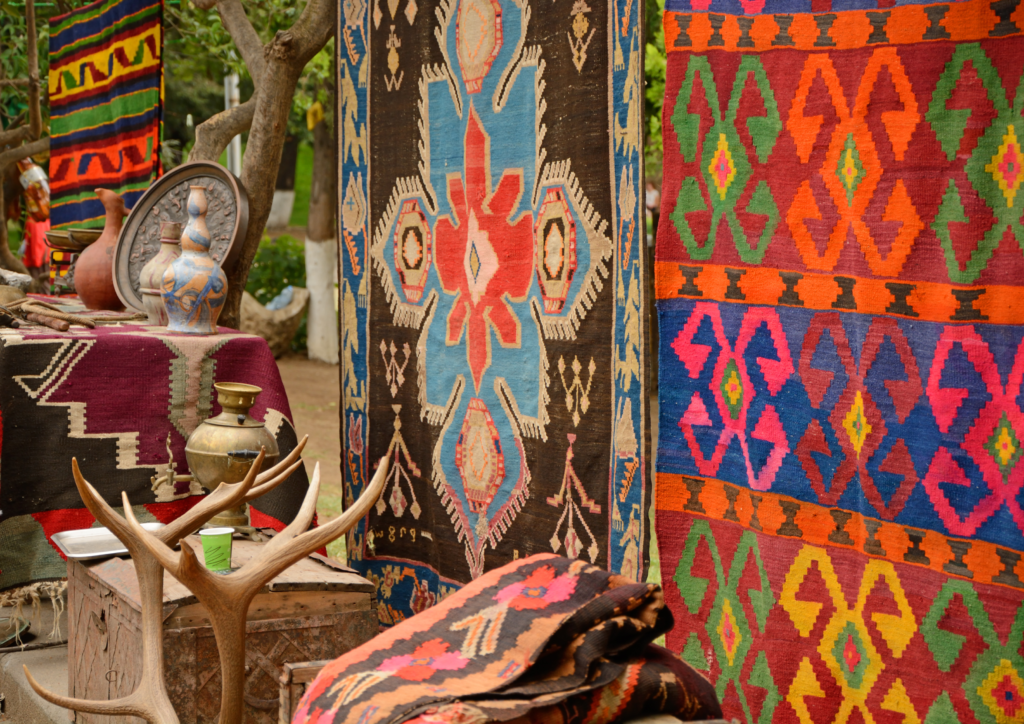
Georgia’s artistic traditions are as varied and ancient as its architectural and culinary heritage. From medieval religious iconography to contemporary literature and art, Georgia has produced works of significant cultural value.
a. Religious Iconography and Mosaics
Georgian Orthodox churches are known for their remarkable frescoes, mosaics, and religious icons. The Gelati Monastery is particularly famous for its 12th-century mosaics, which reflect the influence of Byzantine art. Many Georgian churches are adorned with vivid frescoes depicting biblical scenes and saints, some of which date back centuries.
b. Georgian Literature
Georgian literature is one of the oldest in the world, with roots in the early Christian period. One of the country’s most important literary works is “The Knight in the Panther’s Skin” by Shota Rustaveli, a 12th-century epic poem that reflects Georgia’s medieval chivalric culture. Rustaveli’s poem is a masterpiece of world literature and is often seen as the cornerstone of Georgian national identity.
c. Handicrafts and Folk Art
- Carpet Weaving: The regions of Kakheti and Tusheti are known for their traditional carpet weaving. Georgian carpets often feature intricate patterns and bright colors, reflecting the artistry of local weavers.
- Ceramics and Pottery: Georgian pottery, especially from the Shrosha region, has long been a staple of traditional crafts. Potters use ancient techniques to create both decorative and functional pieces, often characterized by their earthy tones and traditional motifs.
- Woodcarving: Georgian woodcarvers are known for their elaborate designs, particularly in religious settings. The iconostases in Georgian Orthodox churches, as well as traditional wooden balconies in Old Tbilisi, demonstrate this craft.
Tbilisi: A Living Cultural Hub
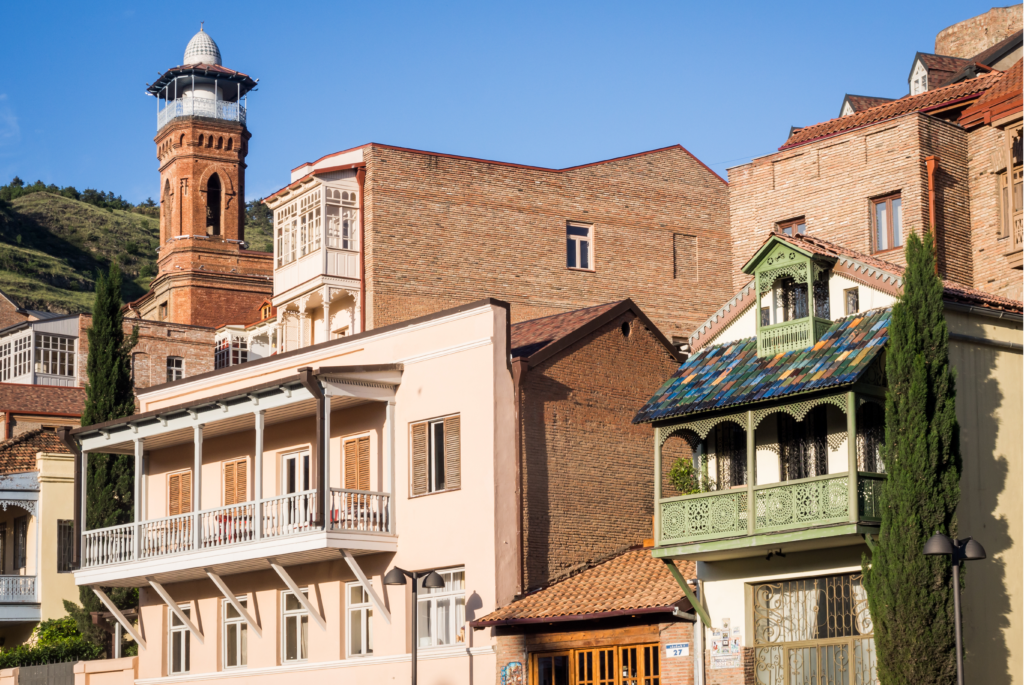
As the capital and largest city, Tbilisi is a hub of Georgian cultural life. A blend of ancient and modern, East and West, Tbilisi offers a unique urban experience that mirrors Georgia’s complex history.
a. Old Tbilisi
The Old Town of Tbilisi is a fascinating blend of narrow streets, wooden houses with carved balconies, ancient churches, and modern cafés. Walking through Old Tbilisi feels like stepping back in time, with landmarks such as the Sulfur Baths, Sioni Cathedral, and Narikala Fortress standing as witnesses to the city’s long history.
b. Museums and Cultural Institutions
Tbilisi is home to a range of museums and galleries that highlight Georgia’s cultural heritage.
- Georgian National Museum: This museum houses a vast collection of archaeological treasures, including ancient gold jewelry, manuscripts, and medieval artifacts. The museum also has a stunning collection of Soviet-era art and relics from Georgia’s long struggle for independence.
- Museum of Fine Arts: Featuring works of Georgian and European art, this museum is a testament to Georgia’s connection with both Eastern and Western artistic traditions. It has an extensive collection of religious icons, reflecting the importance of Orthodox Christianity in Georgian art.
